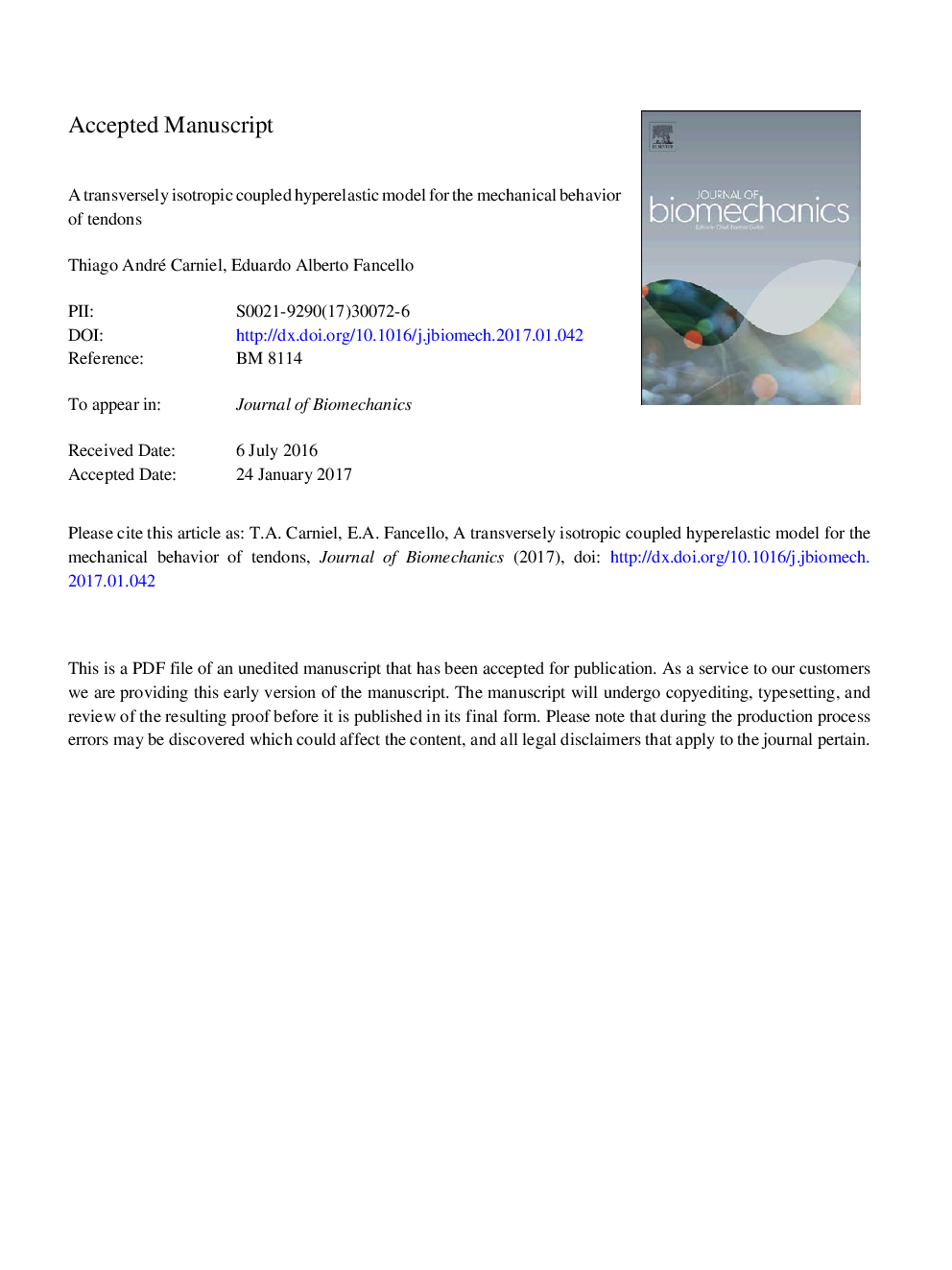| Article ID | Journal | Published Year | Pages | File Type |
|---|---|---|---|---|
| 5032168 | Journal of Biomechanics | 2017 | 40 Pages |
Abstract
Several constitutive models for fibrous soft tissues used in literature provide a completely isotropic response when fibers are compressed. However, recent experimental investigations confirm the expectation that tendons behave anisotropically during compression tests. Motivated by these facts, the present manuscript presents an appropriate choice of hyperelastic potentials able to predict the coupled mechanical behaviors of tendons under both tensile and compressive loads with a relatively small number of material parameters. The high stiffness of tendons under tensile tests is handled by a transversely isotropic model while the coupled compressive response is modeled by means of a Fung-type potential in terms of Seth-Hill's generalized strain tensors. In present study the logarithm strain measure is used instead of the usually employed Green-Lagrange strain. After a parameter identification procedure, the resulting model showed ability to satisfactorily reproduce the experimental data. Details on the analytical material tangent modulus are provided. Present results will then enhance further researches related to tendon dissipative effects and numerical multiscale investigations.
Related Topics
Physical Sciences and Engineering
Engineering
Biomedical Engineering
Authors
Thiago André Carniel, Eduardo Alberto Fancello,
